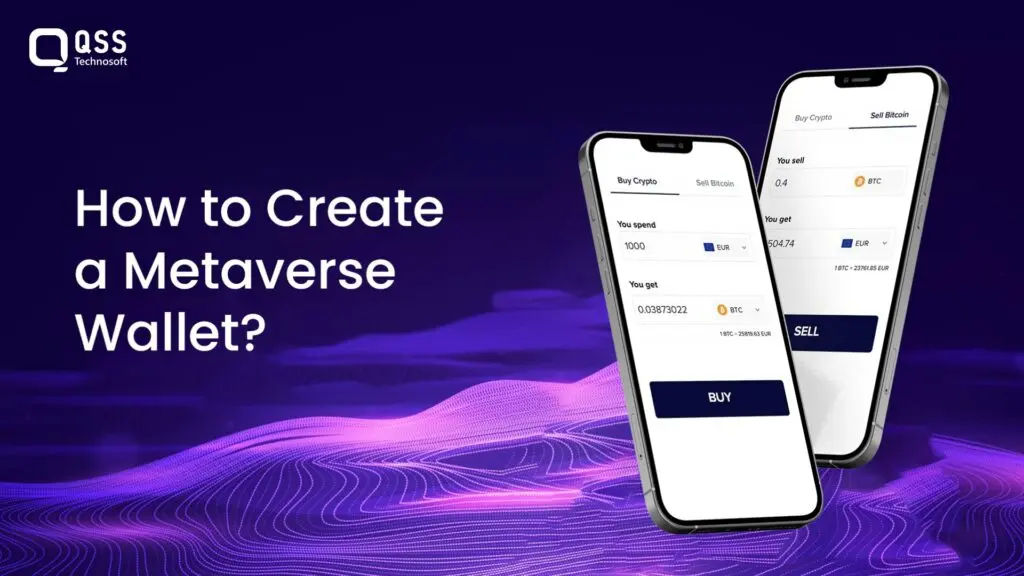In an age where virtual and physical worlds are increasingly merging, a metaverse wallet has become one of the pillars of digital interaction and trade. No matter whether you’re exploring virtual worlds, trading digital assets, or taking part in a growing digital economy, comprehending what a metaverse wallet is and how to create it is vital.

In this blog we will dive into what metaverse wallets are, how to create one, and their future, as well as how to secure them.
What is a Metaverse Wallet?
Management
Metaverse wallet refers to a digital tool meant for managing and safeguarding virtual resources within the metaverse – which is a collaborative virtual shared space brought about by the convergence of virtually enhanced physical reality and physically persistent virtual reality.
- A meta-verse wallet is specific for handling things such as coins (digital currencies), NFTs, and virtual estates, unlike a traditional wallet for hard cash.
- These wallets act as a bridge between the virtual and physical world, enabling its users to interact, buy, sell, and trade digital assets within the metaverse platform.
Also Read :- How the Metaverse is Unveiling New Opportunities for Insurance Businesses?
Create a Metaverse Wallet?
Let’s get into the steps to creating a metaverse wallet-

Step 1: Choosing The Type of Wallet
Choose the type of wallet for Metaverse that fits your needs; hot wallets for digital convenience, cold wallets for offline safety, hardware wallets as an option with physical security, and software wallets that can be adjusted and have enough amount of flexibility. Each type has a different trade-off between security and usability, affecting the functionality and user experience of your wallet.
Step 2: Market, Audience, and Competitors Analysis
Conduct comprehensive analysis to understand market trends, target audience, and competitors. Investigate existing wallets to identify the gaps and potential opportunities. This will enable you to customize your wallet to meet the needs of users by providing additional features or improving current functionality, hence making it stand out among the rest in a highly competitive space.
Step 3: Choose the Characteristics you want to add
Identify the key features of your wallet such as asset management, transaction capabilities, and compatibility with metaverse platforms. Prioritize safety aspects including encryption or authentication while designing an interface that is easy to use. Such qualities will determine how effective the wallet becomes as well as its appeal to customers.
Step 4: Designing
This is where you create an interface that is easy to understand and engages the users. Make prototypes and wireframes for your wallet, which will lay down its layout and interactions in a systematic manner. To navigate through their assets without any hustles, the focus should be on usability, accessibility, and appealing view.
Step 5: Technology Selection
Decide the right technology including blockchain platforms, programming languages, and development frameworks that can be used for developing wallet. In addition to scalability, safety and integration capabilities are important aspects to reflect on when making such a decision. A well-selected technology will ensure that your wallet operates properly while supporting needed features as well as platforms.
Step 6: Development
Start building the wallet by developing both backend and frontend components. Develop core functionalities like asset management as well as transactions, ensuring smooth integration with blockchain networks and metaverse platforms. It is necessary to carry out this stage with strict adherence to security protocols alongside following stringent coding practices.
Step 7: Testing
Test the reliability as well as security of this wallet using various tools like functional testing, secure testing, and user testing. Functional tests confirm whether or not certain features work; vulnerability checks to discover how a metaverse wallet app can be hacked so easily while user tests help get users’ feedback so that wallets can be improved. Conducting extensive trials before launching a wallet helps detect bugs early enough before users pick it.
Step 8: Deployment & Maintenance
After testing and ensuring reliable hosting, deploy the wallet for public use. After successful deployment, take in hand addressing bugs, maintenance and provide adequate support to the users. Provide adequate support, monitoring, and regular upgrades to ensure smooth and secure functioning.
Safety and Security Measures
Ensuring the safety and security of metaverse wallets is crucial. Implementing robust security can help protect your digital assets like metaverse crypto wallet, digital tokens and currencies from any kind of threats and vulnerabilities. Let’s discuss some of the measures to protect your assets and wallet-
Encryption
Encryption is the process of transforming data into a form that can only be read by someone with the right decryption key, making it more secure. In metaverse wallets, encryption prevents unauthorized access to private keys and transaction details.
Two-Factor Authentication
Addition of another layer of security that requires users to supply two forms of identification before accessing their wallet. This could involve something you know (password) and something you have (mobile device or authentication app). Implementing such secure authentication helps keep your metaverse wallet app away from cyber threats and financial frauds.
Biometric Verification
High degree of security is achieved through biometric verification such as fingerprints or facial recognition which ensures that authorized user only gets to enter into the wallet. Replicating this method or bypassing it would not be an easy task.
Cold Storage Solutions
These precautions protect digital assets from online threats by keeping them offline. This method provides high levels of protection against hacking attempts. For cold storage, hardware wallets or paper wallets may be used.
Incident Response Plans
To mitigate security breaches, you must have quick incident response plans. The plan should be an accumulation of investigation, follow-up, addressing, and communicating with the parties affected. This will ensure less damage and threat to data.
Also Read :- What Does it Cost to Build Metaverse Healthcare Solution?
The Future Potential of Metaverse Wallets
Enhanced Features
The future for metaverse will most likely have improved features such as AI-based management of assets, better security measures, and integration with new technologies like virtual reality (VR) and augmented reality (AR). With various innovations in the digital world, metaverse crypto wallet, NFTs, utility token
Greater Integration
When the metaverse proliferates, metaverse wallets will become increasingly integrated within a range of platforms and applications. In this case, users will get a consistent experience across different virtual environments.
Regulatory Evolution
To be compliant with new standards, metaverse wallets will need to evolve as regulations around digital assets mature. This change is important in ensuring that wallets remain secure and legally compliant, thus fostering trust and adoption as well.
Conclusion
Creating a metaverse wallet is a pivotal step in navigating the digital frontier. By understanding its functionality, addressing challenges, and implementing robust security measures, it can ensure a secure and seamless experience in the metaverse. Understanding this guide can help you get clarity on how to start with your next metaverse project and build a successful project.
We are proud to mention that our work has been recognized by leading B2B reviews and research platforms like GoodFirms, Clutch, MirrorView, and many more.


How to Create a Metaverse Wallet?